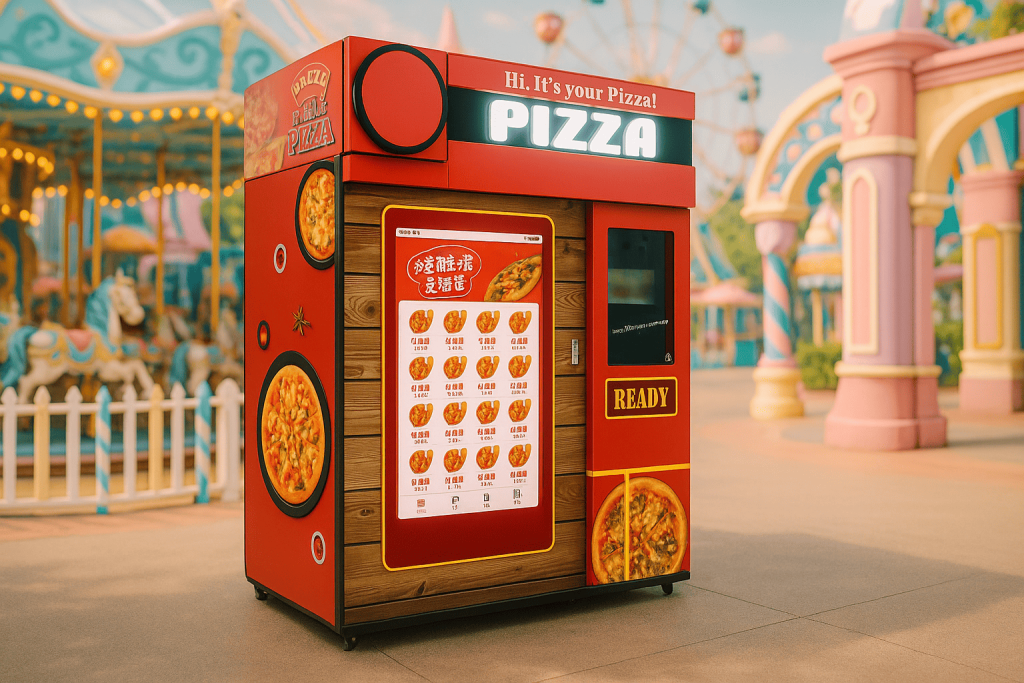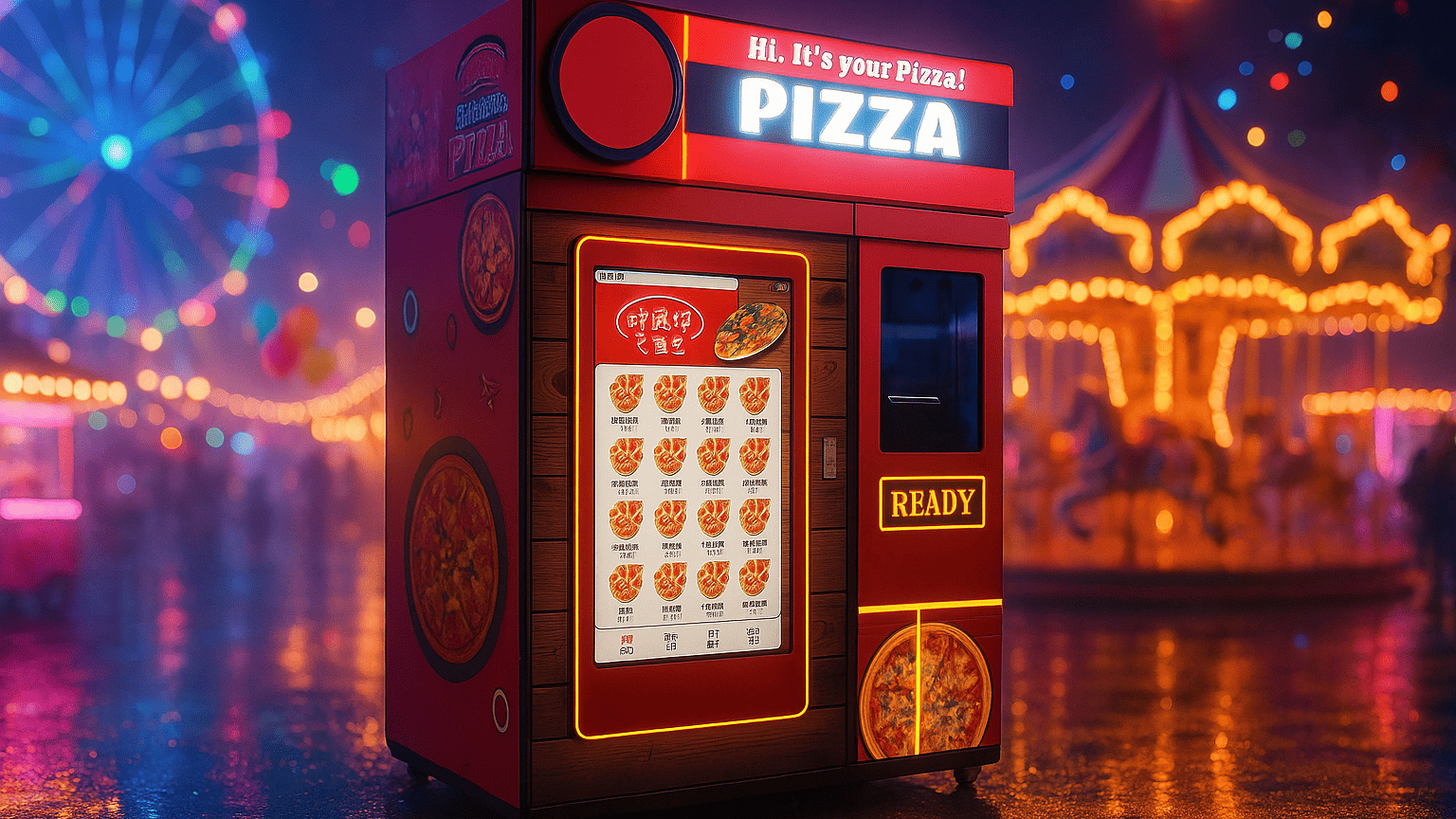
Thinking about deploying a pizza making vending machine? This guide covers costs, site selection, operating practices, HACCP-minded basics, and a practical ROI framework so you can evaluate a pilot with confidence.
A pizza making vending machine automates storage, order/payment, heating, and pickup in one enclosure. Compared with staffed kiosks, it can serve hot pizza with minimal labor and extend service into off-hours where access allows.
Plan one-time versus ongoing costs. Exact amounts vary by model, venue, and contracts.
| Cost item | One-time / Ongoing | What to consider |
|---|---|---|
| Machine & installation | One-time | Site prep, power/network drops, anchoring, basic signage |
| Permits & inspections | One-time / Ongoing | Local health, food handling, vending permissions |
| Food & packaging | Ongoing | Dough/bases, toppings, boxes, condiments |
| Utilities & connectivity | Ongoing | Electricity, data/SIM, gateway fees |
| Payment processing | Ongoing | Card and wallet fees |
| Cleaning & maintenance | Ongoing | Routine cleaning, consumables, wear parts |
| Insurance | Ongoing | Product liability, vandalism, equipment coverage |
| Revenue share / rent | Ongoing | Host commission or fixed rent, if applicable |
Use a simple scoring to compare potential sites before committing hardware.
| Factor | What to check | Why it matters |
|---|---|---|
| 24/7 access | Campus dorms, hospitals, factories, transit | Off-hours demand drives unattended sales |
| Footfall pattern | Peaks, weekday/weekend mix | Align inventory and cleaning cadence |
| Dwell time | Waiting areas, lobbies, lounges | More time = higher impulse conversion |
| Security & visibility | Lighting, CCTV, staff presence | Lower vandalism risk, higher buyer confidence |
| Power & ventilation | Stable supply, allowed heat devices | Smoother install and compliance |
| Nearby F&B options | Late-night competition and pricing | Helps positioning and product mix |
Common workflow: order → payment → retrieve stock → prepare/heat → dispense → log/notify.
Heating approaches often include enclosed air-circulation/convection or similar methods. Capacity, cycle time, and storage configuration vary by model and recipe.
Keep procedures documented and auditable:

Consider two scenarios in your sheet: night-heavy demand (e.g., hospitals) and high-footfall (e.g., campuses).
| Model | Pros | Considerations |
|---|---|---|
| Franchise | Brand, playbooks, sourcing pathways | Fees/contract limits, less flexibility |
| Buy & operate | Hardware choice, supplier competition | You own sourcing, SOPs, compliance, after-sales |
| DIY brand | Maximum control over product/brand | Highest R&D, QA, regulatory and servicing burden |
Where a pizza vending machine tends to work well:
How fast is a serve?
Typically a few minutes per order, depending on model and recipe settings.
How many pizzas can a machine hold?
Capacity varies by configuration and packaging. Check the product page of your chosen model for indicative capacity.
What about cleaning and hygiene?
Follow a documented cleaning cadence, food-contact checks, and temperature logging. Keep incident/recall and expiry-rotation procedures ready.
Do I need revenue share with the host?
Not always. Some sites prefer fixed rent; others use a percentage. Pilot and compare.
Can it accept multiple payment methods?
Most modern machines support cards and mainstream mobile wallets; confirm with your supplier and acquirer.
How do I monitor inventory and faults?
Look for remote dashboards with alerts, sales/inventory views, and failure notifications to plan replenishment and maintenance.
A pizza making vending machine can turn under-served time windows into hot-food revenue—provided your site selection, operations, and HACCP-minded routines are sound. Use the cost stack, scoring model, and ROI fields above to validate a first location.
Notification